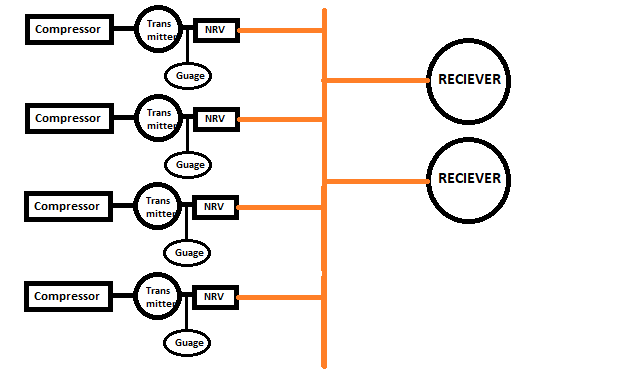Hi,
We have 4 screw compressors of approximately 1200 SCFM, one compressor on VFD.
We have continuous variable demand downstream of receivers from 5000 SCFM to 1500 SCFM.
When we start the compressors with variable setpoints for all compressors 7 bar max pressure for one of the compressor, all the compressors which are in load condition at that time, are showing a pressure reading of 6.5 to 6.4 bar when in load condition, whereas receiver is showing a pressure of 7 Bar constantly, we have two receivers connected in parallel to discharge header of all 4 compressors.
Generally, when there is a pressure drop, the compressor side which is the generating end should be having higher pressure and receiver should have lower pressure. Is there any logic for this reverse scenario happening?
The media is air and each compressor set point measures the value at the individual compressor discharge before check valve.
If there is any data needed, please let me know.
We have 4 screw compressors of approximately 1200 SCFM, one compressor on VFD.
We have continuous variable demand downstream of receivers from 5000 SCFM to 1500 SCFM.
When we start the compressors with variable setpoints for all compressors 7 bar max pressure for one of the compressor, all the compressors which are in load condition at that time, are showing a pressure reading of 6.5 to 6.4 bar when in load condition, whereas receiver is showing a pressure of 7 Bar constantly, we have two receivers connected in parallel to discharge header of all 4 compressors.
Generally, when there is a pressure drop, the compressor side which is the generating end should be having higher pressure and receiver should have lower pressure. Is there any logic for this reverse scenario happening?
The media is air and each compressor set point measures the value at the individual compressor discharge before check valve.
If there is any data needed, please let me know.

